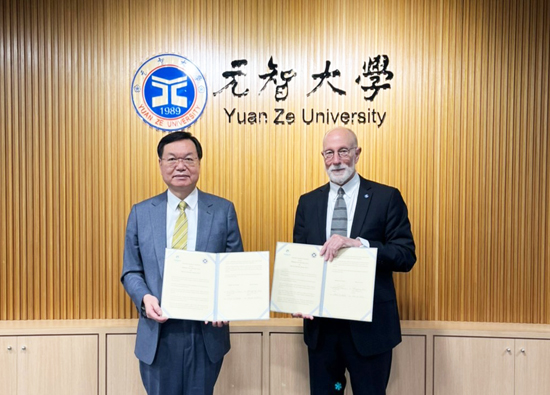05.2023 Office Talk
The importance of biodiversity information in sustainable action
Taiwan Biodiversity Information Agency (TaiBIF)&Yuan Ze University / Ke Zhiren&You Jingying


 Since the United Nations released the 2030 Sustainability Development Agenda in 2015, countries have actively responded to the situation and needs, conducting research on 17 Sustainability Development indicators, and developing guidance and implementation strategies. Taiwan has also formulated the "Taiwan Sustainability Development Goals" since 2016. After two years and dozens of cross departmental discussions, citizen forums, and private team consultations, the first version (Note 1) was completed in 2019 and revised on December 29, 2022 (Note 2), including 18 core goals, 143 specific goals, and 337 corresponding indicators. This issue of the "Sustainability Zone" introduces the importance of biodiversity information in sustainable action.
Since the United Nations released the 2030 Sustainability Development Agenda in 2015, countries have actively responded to the situation and needs, conducting research on 17 Sustainability Development indicators, and developing guidance and implementation strategies. Taiwan has also formulated the "Taiwan Sustainability Development Goals" since 2016. After two years and dozens of cross departmental discussions, citizen forums, and private team consultations, the first version (Note 1) was completed in 2019 and revised on December 29, 2022 (Note 2), including 18 core goals, 143 specific goals, and 337 corresponding indicators. This issue of the "Sustainability Zone" introduces the importance of biodiversity information in sustainable action.Biodiversity is the foundation for achieving sustainability goals
The soundness of biodiversity is related to whether ecosystems can stably support the normal operation of nature, which also includes the food production that human society relies on for survival and various economic activities that access biodiversity resources. In Taiwan's SDG14 "Conservation and Sustainable Use of Marine Ecosystems to Ensure Biodiversity and Prevent Marine Environment Degradation" and SDG15 "Conservation and Sustainable Use of Terrestrial Ecosystems to Ensure Biodiversity and Prevent Land Degradation", both mention "biodiversity" to demonstrate its importance.
However, including sustainable agriculture (SDG2), environmental quality (SDG6) and urban resilience (SDG11), the supply services, regulation services (such as water purification and pollination) and supporting services (such as photosynthesis, evapotranspiration and pedogenesis) that a healthy ecosystem can provide are actually inseparable from more sustainable goals, And this understanding also requires the construction of social awareness through education (SDG4) and mainstream thinking, in order to promote implementation and provide the necessary social conditions for promoting other sustainable goals.
Biodiversity data is indispensable for research and decision-making
Given the complexity of biodiversity issues and the characteristics of spanning administrative regions, in order to make related research and exploration more transparent and efficient, Taiwan has successively released research data from long-term ecological survey areas, species survey data from resource management agencies (such as the Forestry Bureau), and digital specimen collection data from museum and herbarium databases in the past two decades. Opening up and integrating these data can provide scholars and experts with more basic knowledge, revealing which species, activity patterns, and dynamics over time exist in specific geographical regions.
The integrated data can help biological environmental resource management agencies plan budget allocation for future investigation activities, filling data gaps or improving quality, and improving the quality of subsequent decision-making. Researchers compare long-term environmental factor change data based on publicly available integrated data, combined with newly added data, and then analyze them. Finally, they publish a paper report explaining new insights and discoveries about biodiversity. These studies include:
Speculating how the livable conditions of many important species will change under the trend of climate change. For example, in May 2022, the production of wheat in India decreased due to the heatwave, which not only exacerbated the food shortage caused by the Russia Ukraine war, but also caused difficulties for Indian farmers' livelihoods. Research based on integrated data on biodiversity will provide more accurate scientific knowledge needed to formulate agricultural strategies. For example, in response to changes in the livable environment of Arabica coffee trees, where vast coffee plantations will be relocated in the future, and whether other varieties can survive under different climatic conditions, it also depends on sufficient data on relevant species groups to propose convincing research.
In order to improve human health conditions, track the distribution of pathogenic species, understand potential human animal conflicts (such as snake bites) hotspots, pathogen spill sites, or the distribution and growth environment of medicinal plants in nature, or explore related species with similar medicinal properties. For example, through the open sharing of information between Dr. Huang Junjia from Normal University and bat experts in Southeast Asia, we observe the distribution of different species of bats in Asia and their interactions with other species, further explore the possible activity of the coronavirus in Asia, and provide a speculated basis for virus sampling or pathogen transmission.
In order to protect food security, research is conducted on the pollination behavior of wild species, understanding the protection of genetic diversity and genetic diversity of food crops in nature, and planning for fisheries.
Based on the understanding of the complex interactions between species, plan to establish protected areas, which not only protect endangered or critical species, but also protect the complete ecosystem and habitat environment related to species survival; It is also possible to monitor the impact of invasive species on local biodiversity or crops for a long time and intervene in timely treatment.
Enterprises can enhance their ESG status by contributing biodiversity data
The soundness of biodiversity is crucial for promoting sustainability, and the maintenance of biodiversity relies on scientific research to provide high-quality decision-making. How can open access and integrated biodiversity data become the focus of enterprises in sustainable issues and actions, affecting and contributing to multiple sustainable goals? Here are several possible ways to participate:
Establish continuous species diversity survey activities for the reserves and reserves adopted by enterprises, reorganize, accumulate data and publish them regularly. By combining citizen science activities and immersing employees in the natural environment through participation, we can cultivate a sense of sustainable action while also enhancing employee emotions and productivity.
Biodiversity data stored in museums or herbarium museums span time and space, are established by researchers, and are of great value. However, digital collection and data management have always been time-consuming and labor-intensive work. Enterprises can collaborate with them to design volunteer activities and understand the educational and research purposes of the collection (SDG4); Alternatively, assisting in digitization work, designing and maintaining information management systems can significantly improve their operational efficiency and enhance the production and use of data.
The timely and effective circulation and access of information, as well as its transformation into useful information, are crucial for a large number of information services in modern society, such as Google Maps and real-time air pollution; The same applies to data on biodiversity. Enterprises can utilize their experience in information management and the advantages of information system construction to assist management units in establishing efficient information systems, accelerating the flow of biodiversity data, or facilitating data access and analysis. Whether directly participating in information system construction projects or providing professional software development manpower, it can enhance the production efficiency of biodiversity data.
The production and circulation of biodiversity data involve multiple contributors, such as research institutions, resource management institutions, museums, and specimen museums. Each contributor is assigned a unique identification code to facilitate tracking and identification, and to ensure the transparency and traceability of biodiversity data. For example, if a researcher or decision-making body needs to use this data, identification codes can be used to track the source and contributors of the data, in order to understand how the data is collected, processed, and used, ensuring that its use is legal and transparent, while avoiding misuse or abuse of the data.
In addition, some companies may provide funding, technology, or other resources to support research and conservation of biodiversity. Unique identification codes can be used to track and quantify the contribution of enterprises to biodiversity data, helping to improve transparency and sense of responsibility for enterprises.
Note:
1. Reference materials: https://ncsd.ndc.gov.tw/Fore/aboutsdg
2. Reference materials: https://ncsd.ndc.gov.tw/_ofu/meet/06aed260-a583-4dd6-92d7-9e6c63349fb0/files/%E8%87%BA%E7%81%A3%E6%B0%B8%E7%BA%8C%E7%99%BC%E5%B1%95%E7%9B%AE%E6%A8%99%E4%BF%AE%E6%AD%A3%E6%9C%AC.pdf?e9645b22 -e87e-45bb-99b1-00689ea052c4
Image source: freepik
#




















